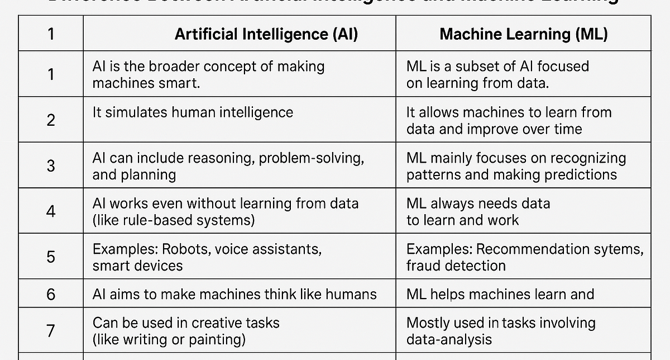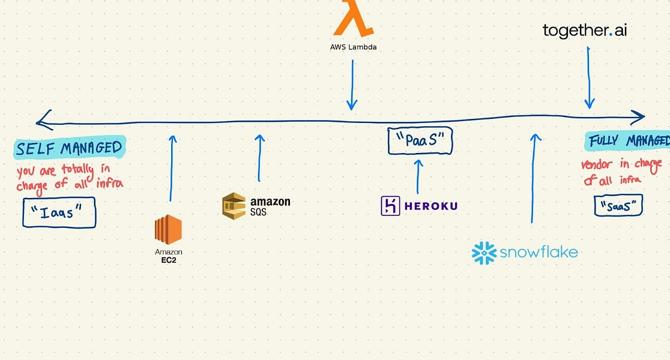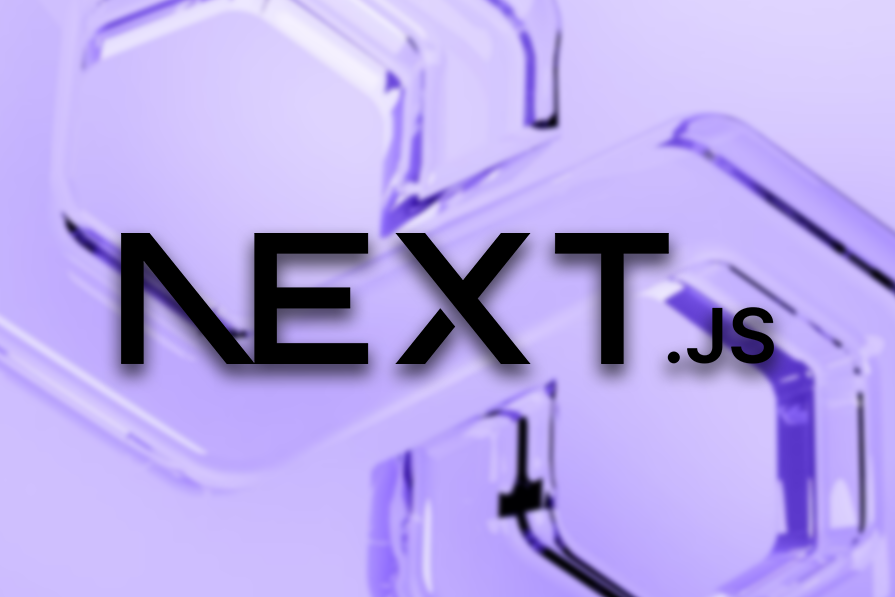Programming News
Medium
334

Image Credit: Medium
Function Calling in Large Language Models: Unlocking Practical Applications with Real-World Cases…
- ChatGLM's function calling feature enhances the model's reasoning and external operation capabilities.
- Tools are an optional parameter in the content generation API for providing function definitions to the model.
- The API generates function parameters based on user specifications without performing actual function calls.
- Developers can use the model's output parameters for executing function calls in applications.
- The tutorial covers building a student grade database, implementing query and data filtering functions, and using LLM function calls for database interactions.
- Non-technical users can interact with the database using natural language through LLM function calls.
- For technical personnel, understanding LLM function calls aids in implementing relevant functions.
- A student exam score Q&A service example demonstrates generating scores for 100 students and saving data to an SQLite database.
- Simple database query operations are implemented to ensure proper database functioning.
- Five functions are defined and structured for LLM selection, including name, description, parameter list, and descriptions.
- Function calling, obtaining return results, and using LLM for question answering are demonstrated.
- The tutorial summarizes the working principle of LLM function calls for practical applications.
- This content focuses on the application of function calling in ChatGLM for various operations and interactions.
- It emphasizes the integration of external function libraries with ChatGLM models.
- The tutorial highlights the importance of understanding LLM function calls for both technical and non-technical users.
- Overall, the tutorial showcases the potential of LLM function calls in enhancing model capabilities and real-world applications.
Read Full Article
20 Likes
Dev
128

Image Credit: Dev
The Importance of Leveraging AI to Learn
- Artificial Intelligence (AI) is crucial for tasks requiring human intelligence like reasoning and learning.
- It is essential to use AI effectively in the learning process as it is becoming increasingly prominent.
- Junior developers shouldn't depend solely on AI for generating code; it's crucial to learn from the process.
- AI should be used as a learning companion and guide to challenge understanding and support growth.
- The quality of AI-generated responses is determined by the quality of the prompts given to it.
- Six building blocks for a good prompt include clear task definition, providing relevant context, sharing exemplars, specifying persona, defining format, and deciding on tone.
- Following a prompting framework can enhance communication with AI and lead to accurate and helpful responses.
- AI should be viewed as a supportive tool in the educational journey, not as a replacement for learning.
Read Full Article
7 Likes
Medium
249

Image Credit: Medium
Difference Between Artificial Intelligence and Machine Learning
- Artificial Intelligence (AI) is a branch of computer science that aims to create intelligent machines capable of performing tasks requiring human intelligence.
- AI systems simulate human intelligence and can be rule-based or data-driven.
- Examples of AI include voice assistants like Siri, self-driving cars, and chatbots.
- Machine Learning (ML) is a subfield of AI that focuses on developing algorithms allowing computers to learn from data and make predictions without explicit programming.
- Key characteristics of ML include learning from historical data, improving accuracy over time, and requiring large datasets for training.
- Examples of ML include email spam filters, movie recommendations on Netflix, and product recommendations on Amazon.
- Real-life examples of AI vs. ML include a robot vacuum planning its cleaning path (AI) and predicting prices of used cars based on data (ML).
- Differences between AI and ML include the approach to problem-solving and the focus on learning from data.
- Understanding the distinctions between AI and ML is crucial for further advancements and application development in modern computing.
Read Full Article
14 Likes
Technically Dev
359

Image Credit: Technically Dev
Breakdown: the cloud infrastructure market
- Infrastructure and cloud refer to where software runs, involving hardware, networking, and systems enabling online activity.
- In the past, software primarily operated locally on individual devices, but now most software is cloud-based.
- The shift to cloud computing led to new considerations for developers, such as choosing the right cloud provider and service model.
- Different types of infrastructure include IaaS, PaaS, and SaaS, offering varying levels of management and customization.
- IaaS provides basic server resources, PaaS offers more managed services, and SaaS is fully managed.
- The choice between these options depends on the level of control and customization required by developers.
- The components of an app that need infrastructure support include frontends, backends, databases, analytics, and miscellaneous tasks.
- Companies like AWS, Cloudflare, DigitalOcean, Heroku, and Vercel cater to different infrastructure requirements.
- The evolving landscape of cloud infrastructure offers diverse solutions for developers based on their needs and preferences.
Read Full Article
20 Likes
Discover more
- Software News
- Web Design
- Devops News
- Open Source News
- Databases
- Cloud News
- Product Management News
- Operating Systems News
- Agile Methodology News
- Computer Engineering
- Startup News
- Cryptocurrency News
- Technology News
- Blockchain News
- Data Science News
- AR News
- Apple News
- Cyber Security News
- Leadership News
- Gaming News
- Automobiles News
Dev
49

Image Credit: Dev
Writing Your First Automated Test Using Python (unittest Framework)
- Python's unittest framework is a good starting point for testing journeys, as it comes bundled with Python and is an industry standard.
- unittest is a unit testing framework in Python standard library, following the xUnit style, used for writing test cases as classes and using special methods for test context.
- The article presents a step-by-step guide to building your first Python test, starting with creating a function to be tested and writing test cases using assertions.
- Testing for exceptions using methods like assertRaises( ) is highlighted, emphasizing the importance of handling edge cases in real projects.
- Maintaining scalability in test projects involves organizing the structure effectively, separating production code from test files for easy management.
- The usage of setUp() and tearDown() methods for managing test context is explained, ensuring tests run independently and cleanly.
- Running tests using verbose mode (-v flag) provides more detailed output, beneficial when dealing with numerous test cases.
- The article outlines when to use unittest versus Pytest, highlighting the significance of thinking like a tester while mastering unittest syntax.
- Mastering unittest is crucial for Python developers to write clean, testable, and production-ready code, instilling confidence in test automation processes.
Read Full Article
2 Likes
Logrocket
111

Image Credit: Logrocket
How to optimize your Next.js app with after()
- Building apps with Next.js involves optimizing server tasks post-response using the after() API of Next.js 15.
- after() allows running logic after route rendering without impacting the client's experience, beneficial for tasks like analytics or logging.
- It works in Server Components, Actions, Route handlers, and Middleware, with varying access to request info.
- Nested after() calls execute in reverse order of their rendering, providing a clean way to handle post-response tasks.
- after() runs even during errors, ensuring critical tasks like logging continue despite route failures.
- Key considerations include after()'s static nature, need for manual gating of conditional logic, and limitations in dynamic reactivity.
- alternatives to after() include waitUntil() for Edge Middleware and await for tasks that must complete pre-response.
- Utilizing after() effectively can significantly enhance web app performance and user experience by deferring non-critical tasks.
Read Full Article
6 Likes
Logrocket
317

Image Credit: Logrocket
A complete guide to AdTech for product managers
- Monetizing products with ads through AdTech can be highly profitable for high-traffic websites.
- Understanding the complexities of the advertising ecosystem and how AdTech works is crucial for maximizing ad revenue.
- AdTech involves publishers, advertisers, ad slots, inventory, ad servers, SSPs, DSPs, ad exchanges, direct deals, and more.
- Automation by ad servers streamlines the process of delivering and tracking ads on publisher websites.
- SSPs and DSPs help automate buying and selling inventory between publishers and advertisers.
- Ad exchanges function as automated online auctions, facilitating ad placements based on bids from DSPs.
- Direct deals between advertisers and publishers can occur for premium ad placements.
- All-in-one platforms like Google Ad Manager streamline ad serving and exchanges, reducing costs.
- Various other players like ad networks, data platforms, and agency trading desks play roles in the AdTech ecosystem.
- Adding ads to products involves building ad slots, utilizing ad server tags, selecting SSPs, and setting up header bidding.
Read Full Article
19 Likes
Alvinashcraft
161

Dew Drop – June 24, 2025 (#4445)
- Inside Access: Join Us at VS Live! Redmond for a Week of Deep Developer Learning (Mads Kristensen)
- LINQPad 9 Early Preview – LINQPad 9 is a major update unifying the Windows and macOS codebases (Joe Albahari)
- Build your code-first agent with Azure AI Foundry (Microsoft)
- Create a Contact Management App in .NET MAUI Using ListView and DataForm (Jayaleshwari N.)
- Introducing Mu language model and its impact on Windows Settings (Vivek Pradeep)
- Modernizing Win32 Apps with WinUI – Advanced Installer’s Approach (Renato Ivanescu)
- Technology & Friends – Scott Hanselman on New Technology and Old Friends (David Giard)
- Using SQL Server 2025 Vector Search in .NET Aspire – eShopLite Style! (Bruno Capuano)
- How to create light and dark color modes with CSS (Chris Ferdinandi)
- SSO Comes to Telerik and Kendo UI for a Simpler, More Secure Account Access (Dragan Grigorov)
Read Full Article
9 Likes
Medium
359

Image Credit: Medium
A 5-Step Prompt To Land More Data Job Interviews
- A 5-step prompt designed for Google Gemini to enhance landing more data job interviews.
- The prompt involves feeding information to an AI Agent, aligning job roles with resume summaries, updating resume for stronger applications, and ranking job matches based on descriptions.
- The strategy includes engaging in conversations with the AI agent for detailed resume refinement and highlighting key skills.
- The approach focuses on iterating over an existing resume for impactful improvements.
- The prompt aims to streamline the data recruiting process and optimize resume content.
- It encourages personalized interactions with AI to enhance application success.
Read Full Article
21 Likes
Dev
282

Image Credit: Dev
Steering Clear of Implementation Disasters: Your Guide to Successful Dynamics 365 Deployment
- Organizations embarking on Dynamics 365 deployment face common pitfalls that can hinder success.
- Thorough planning with proper business analysis and requirements gathering is crucial for success.
- Stakeholder alignment is essential to prevent conflicting priorities from derailing the project.
- Data migration is a challenging aspect due to data quality issues and requires comprehensive audits.
- Change management is critical for successful implementation, requiring more than just training.
- Creating a culture that embraces change and clear communication are key to overcoming resistance.
- Integration challenges with existing applications require detailed planning and testing.
- Testing and quality assurance are crucial to catch issues before deployment and ensure a smooth transition.
- Comprehensive testing should include functional, performance, security, and user acceptance testing.
- Parallel running periods with old and new systems aid in a safe deployment transition.
- Successful implementation involves addressing planning, data quality, change management, integration complexity, and testing.
- Investing time and resources in these areas increases the chances of realizing the full benefits of the new system.
Read Full Article
16 Likes
UX Design
276

Image Credit: UX Design
Test smart: how to escape burnout?
- Burnout is a hot topic among IT individuals due to technological advancements and cognitive load.
- Tips include setting boundaries to maintain personal space and assertiveness.
- Prioritizing a healthy lifestyle, such as nutritious eating and regular physical activity, is crucial.
- Balancing emotional well-being by sharing feelings with trusted individuals or seeking therapy is essential.
- Escaping burnout requires regaining control over well-being through boundary setting, healthy living, and emotional care.
- Various resources and expert advice are cited for further exploration on avoiding burnout and maintaining mental health.
- Preventing burnout involves a multifaceted approach focusing on self-care, emotional support, and work-life balance.
- Taking breaks, offline activities, and seeking help when needed contribute to maintaining a sustainable work environment.
- The article addresses the prevalence of burnout in the IT sector and emphasizes the importance of self-care and boundaries.
- It provides practical advice on avoiding burnout, such as setting boundaries, prioritizing health, and seeking emotional support.
Read Full Article
16 Likes
Medium
256

Image Credit: Medium
How Remittance Kiosks Help Save Time and Reduce Fees
- Remittance kiosks have revolutionized international money transfers by offering convenience, accessibility, and cost savings.
- They bypass traditional banking inefficiencies like long queues, paperwork, and delays in fund access.
- Operated like ATMs, remittance kiosks enable users to send money independently with user-friendly interfaces.
- They ensure real-time processing, currency conversion, and regulatory compliance.
- Remittance kiosks are strategically located for easy access, enhancing convenience for users.
- They save time by providing round-the-clock availability and near-instant processing of transactions.
- Kiosks offer cost advantages through lower fees, competitive exchange rates, and reduced intermediary bank charges.
- Security features, user-friendly interfaces, and diverse payment methods make remittance kiosks appealing.
- Future trends include enhanced technologies and deeper integration with digital wallets for a seamless user experience.
- Remittance kiosks are reshaping the global money transfer landscape by offering efficient and affordable solutions.
Read Full Article
15 Likes
Medium
140

Image Credit: Medium
Agentic AI Training in Ameerpet | Agentic AI Course Online
- Agentic AI systems can perceive environments, make decisions, and take actions independently, revolutionizing data science.
- This advancement allows for autonomous systems in sectors like healthcare, finance, marketing, and logistics, transforming business operations.
- Agentic AI empowers machines to act as decision-making agents, enhancing productivity, accuracy, and scalability in data science.
- Mastering Agentic AI concepts opens doors to advanced roles and impactful projects for data science professionals.
- The course covers foundational data science and advanced Agentic AI concepts with practical, hands-on experience.
- Agentic AI Online Training offers a structured path to mastery from home, featuring interactive sessions, real-time projects, and mentor support.
- Skills gained in Agentic AI find applications in sectors like healthcare, finance, marketing, logistics, and more, boosting career opportunities.
- Course highlights include a balance of theoretical depth and real-world implementation, making it globally accessible.
- The course is suitable for individuals looking to contribute to innovative projects and explore advanced career opportunities.
- Understanding Agentic AI is crucial for those aiming to lead tech transformations, with enrollment in a course offering future tech career prospects.
- Enrolling in an Agentic AI course presents the opportunity to upgrade AI capabilities, boost careers, and enhance data science skills.
- VisualPath offers Agentic AI Online Training designed for global access, providing in-depth knowledge and hands-on experience.
- The course is ideal for professionals across various backgrounds, equipping them with the tools to excel in AI-focused job markets.
- Agentic AI is reshaping and defining the future of technology, with intelligent systems leading autonomous and responsive advancements.
- Learning Agentic AI now prepares individuals for impactful tech careers, emphasizing the importance of skill development for the future.
- To enhance AI capabilities, boost careers, or advance in data science, enrolling in an Agentic AI course at VisualPath is recommended.
Read Full Article
8 Likes
Medium
8

Image Credit: Medium
Mobile App Hacking | Professional Hacking Services
- Mobile app hacking involves various techniques like reverse engineering, tampering, network attacks, exploiting vulnerabilities, malware, and social engineering.
- Hackers decompile apps to reveal code and sensitive information like API keys, and manipulate apps to add malicious features or bypass security mechanisms.
- Network attacks, including Man-in-the-Middle attacks, intercept app-server communications to manipulate data or capture sensitive information.
- Common vulnerabilities in mobile apps, such as SQL injection or insecure data storage, are exploited by attackers to access sensitive data.
- Malware is used to distribute malicious versions of legitimate apps through unofficial channels, leading to theft of personal information and other malicious activities.
- Social engineering techniques like phishing are employed to trick users into revealing personal information or credentials.
- Mobile app hacking is a significant threat to individuals and organizations, requiring vigilance and expertise to mitigate.
- HackersClique is suggested as a reputable source to hire hackers for assistance with mobile app security.
- URL: https://www.hackersclique.com
Read Full Article
Like
Dev
53

Image Credit: Dev
I published my first Desktop App after 6 months of work — Everything I learnt
- The author developed PyUIBuilder to simplify Python GUI development, focusing on requirements like web/desktop accessibility, clean code export, and support for various GUI libraries and widgets.
- The initial prototype included only a web version, showcasing a demo on Reddit to gain interest from Python developers.
- Months were spent improving the web app's features before starting work on the Desktop app using Electronjs for live previews.
- Github Actions helped facilitate cross-platform compilation, allowing the author to build the app for different operating systems without owning machines for each OS.
- Code signing for desktop apps, especially on Mac OS and Windows, was addressed by transparently informing users about the lack of code signing for trust.
- The author's journey with PyUIBuilder demonstrates the challenges and solutions encountered in developing and releasing a Python GUI builder.
Read Full Article
3 Likes
For uninterrupted reading, download the app